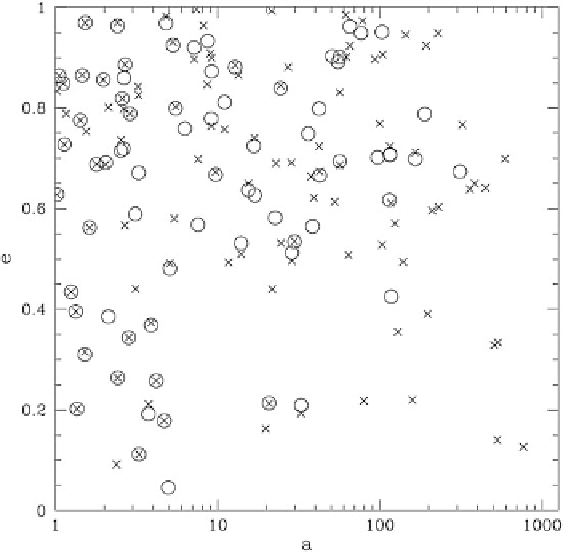Geoscience Reference
In-Depth Information
Fig. 13.9
Initial (
crosses
)andfinal(
circles
) binary orbital parameters obtained in the stellar
cluster evolution simulations of Malmberg et al. (
2007
) (Figure reproduced from the Figure 4
of that paper in the MNRAS)
If none of the aforementioned solution works, then a more radical explanation
should be considered, i.e. that planets in close binaries form by a different
channel than the usual core-accretion scenario. An obvious alternative would be
the gravitational instability scenario (e.g. Boss
1997
; Mayer et al.
2010
), in which
planets form very quickly by direct disc fragmentation. Although this model still
has several issues that need to be solved, in particular the cooling of collapsing
protoplanetary clumps, it has recently been advocated as a possible explanation
for the presence of giant planets at large radial distances from their stars, such as
in the HR 8799 system (Boss
2011
). Duchêne (
2010
) argues that this alternative
formation mechanism could be at play in a
b
100 AU binaries and that it could
explain why planets in tight binaries are more massive than around single stars.
In such close binaries, the instability mechanism could indeed be more efficient
than around single stars, because circumprimary discs might be more compact, and
thus more prone to fragmentation, than non-truncated ones, but also because binary
perturbations could act as an additional trigger to instabilities. As a result, even
close-in planets could be formed this way in binaries (Duchêne
2010
). However,
several studies have also shown that the instability scenario does also encounter
major difficulties in the context of close binaries and that no circumprimary disc

Search WWH ::

Custom Search